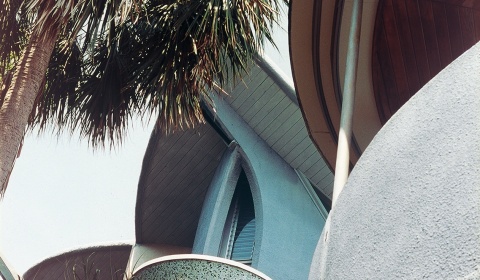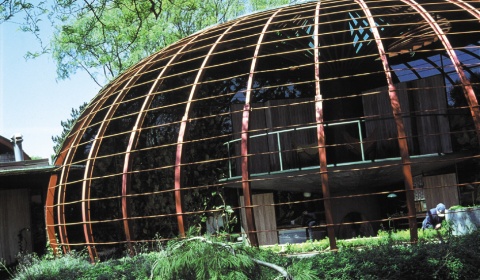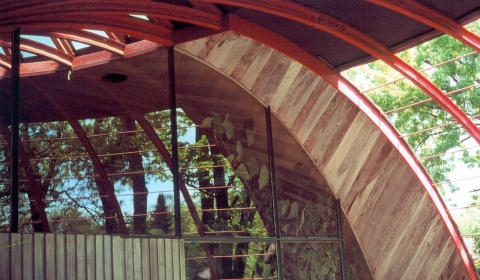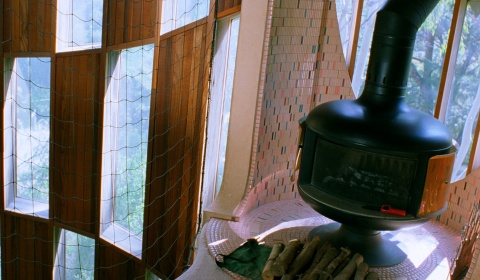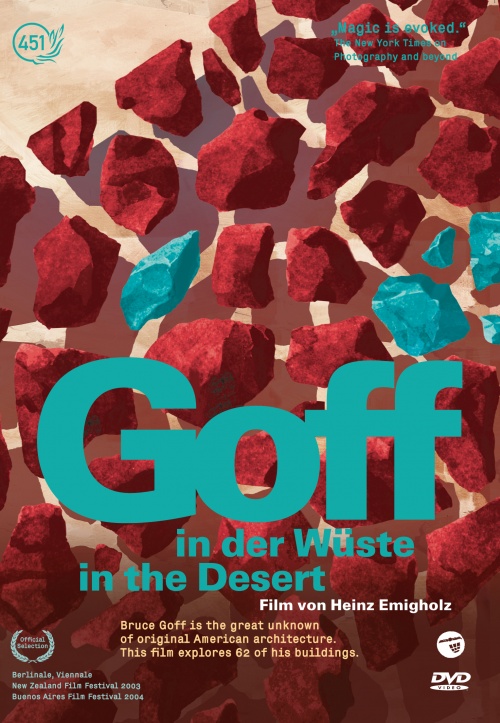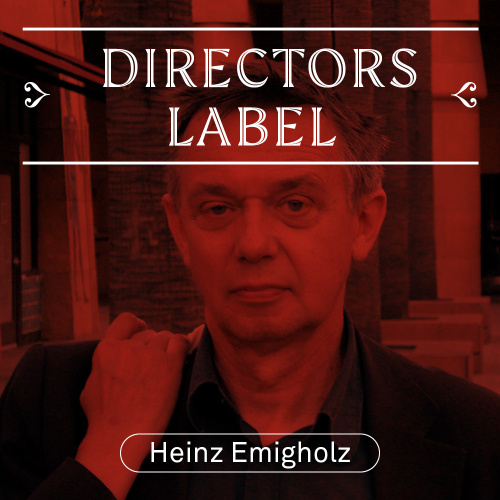
Goff in the Desert
GER 2003, 110 min
Heinz Emigholz’ congenial approach to Bruce Goff’s works.
Synopsis
GOFF IN THE DESERT presents 62 buildings from the American architect Bruce Goff (1904-1982) – from the smallest cottage to an impressive museum pavilion – and is the only cinematographic collection of almost all of his buildings still in existence. Bruce Goff is considered to be one of the ”greatest unknowns“ of American architecture. As a determined experimenter, his works and designs were often in significant contrast to the ”International Style“ movement, and the controversies surrounding his works have since become legendary. Almost all of his buildings created a shock in the landscape, paving the way for new, yet unimaginable avenues in architecture.
Streaming-Info
Rent or buy the movie on Vimeo.
Language: German, Subtitles: English
Film kaufen
VOD
451-Vimeo
DVD
451-Alive Shop
amazon
Awards and Festivals
- Berlinale Forum, 2003
- Viennale – Vienna International Film Festival, 2003
. New Zealand Film Festival, 2003
- Buenos Aires Film Festival, 2004
- Medien und Architektur Biennale Graz, 2004 – Erster Preis als beste Architekturdokumentation
Additional Texts
Bruce Goff
Bruce Goff was born in Alton, Kansas, on 8 June, 1904. In 1916, he began an apprenticeship in the architectural offices of Rush, Endacott & Rush in Tulsa, Oklahoma. From 1922 to 1929, Goff worked full-time for the company, and from 1929 to 1933 he was a partner. He built his first house in 1918 before he had even graduated from high school. In 1920, he briefly came into contact with Louis Sullivan. After completing many projects on his own and having collaborated with Frank Lloyd Wright on one occasion, Goff became a registered architect in 1929, even though he had never had any formal training as an architect. In 1934, he opened his own offices in Chicago, where he built and taught until 1941. In the early 1920s, he also took up painting. He was particularly interested in modern music and the indigenous peoples of North America, Asia, the Pacific islands and Africa. From 1940 onwards, his con-structions were characterised by an incomparable, surprising style based on a radical dedication to the job at hand. From 1941 to 1945, he worked as an architect for the U.S. Navy.
In 1945, he opened offices in Berkeley, California. From 1947 onwards, he was the dean of the University of Oklahoma school of architecture, where he became an extremely influential teacher. In 1956, the university’s Bauhaus fraternity hounded him out of office, and some of his preparatory sketches were burnt. From 1956 to 1964, he had offices in Bartlesville, Oklahoma, which then relocated to Kansas City, Missouri from 1964 to 1971. Goff subsequently moved to Tyler, Texas, where he died on 4 August, 1982. From 1969 onwards, he went on extended lecture tours of Japan and Europe. The first monograph of his work, by Takenbu Mohri, appeared in Japan. In all, Bruce Goff completed almost 150 projects and planned many more. About 80 of his buildings still exist.
Originality and Architecture
Bruce Goff (05.09.1968)
Many architects and other artists fear originality, because they don’t have it or suspect it is an easy trick to attract attention. They often believe that anything original lacks substance. Actually nothing in art is strictly and completely original with its creator. He has been inspired by many things, past and present, sometimes imitating them but always eventually assimilating them if he is a real artist. He knews that imitation is a deadend street and that when it comes – beauty goes. Much of what he works with is not of his own invention. He uses geometries, the origin of which are unknown, and also finds inspiration in the “free-forms” of nature. These sources belong to no man until he makes them his own in his individual and original works. The original works of others, the natures of materials, methods, principles, revelations of science, faith and more also gives him roots from which to grow; they are all grist for his mill and if he has inspiration, imagination, initiative, courage and a balance of feeling and reason, all with dedication to his art, he will grow in his own original way. His works show originality naturally because he is naturally original, and they mean much more than being “novel.” Such an architect is in the great tradition of change and revolution. But often what seems to be revolution is, in a larger sense, evolution and part of “the main-stream” of art after all!
Any genuine work of art is necessarily orginal. It is the first and last, of its kind, in the order of its existence. It has not been copied from anything and is produced for the first time with freshness and authority. We soon tire of novelty if it lacks depth and meaning. A truly original work has these and many more qualities; it is the result of a natural growth of ordered ideas. There is no beginning, for no one knows, even its creator, the many sources that natured it, and no one can know its ultimate effect, so it has no ending. It has emerged in the ever-continuous-present as a unique and valuable contribution to all men by man’s own creative spirit; if it has value it will be timely and timeless, and it will also be both personal and impersonal with its creator, if it is a masterpiece, its influence will continue with the histories of man’s achievements and it will be treasured.
A masterpiece must be original, one of a kind. It is the only work, even of its creator’s output, which has grown in its own particular way. It has a new kind of beauty and came about because it had to, full-strength, uncompromising, honest and extending the horizons of the artist’s work, his art, and its benefits to all mankind, moreover, a masterpiece must have the quality of surprise, to engage our attention, and of mystery to hold our interest. It must also be complete in itself with its own character of disciplined order, no matter how “free” it may seem, we desire to enter into and to inhabit any great and original work of art – to possess it and to allow it to possess us, be it lite-ra-ture, painting, music and architecture.
This is why architecture is such a powerful art: we can inhabit it physically as well as spiritually in time and space. Someday perhaps it will, like music, become less earth-bound, more flexible and athletic, more ever-changing, and free. Then architecture will escape the outside-in formalism of the static regimentation of our steel and concrete frames with their monotonous “plug-in-systems” and resulting rhythmic sterility. New materials, methods, needs and increased technological knowledge will enable original architects to produce newly-beautiful design-structures of architecture as directly as the composer of music reaches us, without performance or interpretation by others, via the new medium of electronic music. This will allow the architect to conceive of and to realise his work, through some such process as chrystalization or electro-magnetic attraction which will make obsolete present handicraft, machine methods and “computeritis.” Exit the 3 and 4 letter Big Business boy’s firms in building and enter the creative, artist-science-architect-truly original!
But whatever and whenever the means, the creative architect must beware of subjecting his works to a “personal style“ or “trademark.“ His handwriting will have his own personal characteristics, regardless of what he says with it. But what he’s saying is of much more importance and each of his works deserves to become its own form and style. Therefore each of his works will be original and collectively they will represent their architect’s originality. Such an architect will not fear originality but will thrive on it; he cannot and will not imitate others or himself!
Watch Movie
VOD
451-Vimeo
DVD
451-Alive Shop
amazon
Credits
Director, Director of Photography and Editor
Heinz Emigholz
Narrator
Christian Reiner
Colaboration and Original Sound
Ueli Etter, May Rigler
Sound Design
Martin Langenbach, Bernd Popella
Produced by
Filmgalerie 451
In Coproduction with
WDR (Wilfried Reichart)
With the Help of
MFG Filmförderung Baden-Württemberg and SWR
DVD-Details
Extras
Making of (50 min), Commentaries by Heinz Emigholz (English and German), Biographies of Bruce Goff and Heinz Emigholz, Building by building navigation, Folder
Language
German (short off-comment, most of the time without dialogue)
Country Code
Code-free
System
NTSC / Color
Length
110 min + 50 min Extras
Aspect Ratio
4:3
Sound Format
DD 5.1 + 2.0
Set Content
Softbox (Set Content: 1), Folder
Release Date
20.01.2006
Rating
No age distriction
Distribution Details
Screening Format
DCP (2K, 25 fps, 5.1)
Blu-ray Disc (5.1)
35mm
Aspect Ratio
35mm, 1:1,37
Language
German (short off-comment, most of the time without dialogue)
Subtitles
English (DCP, Blu-ray Disc)
Promotion Material
A1-Plakat
License Area
Worldwide
Rating
No age distriction


